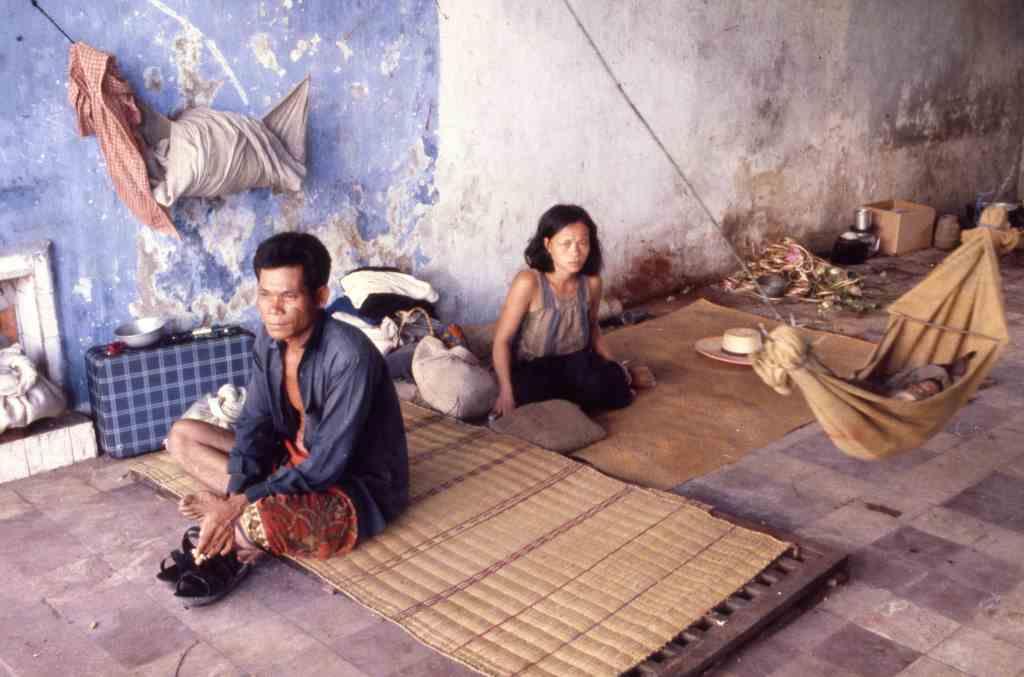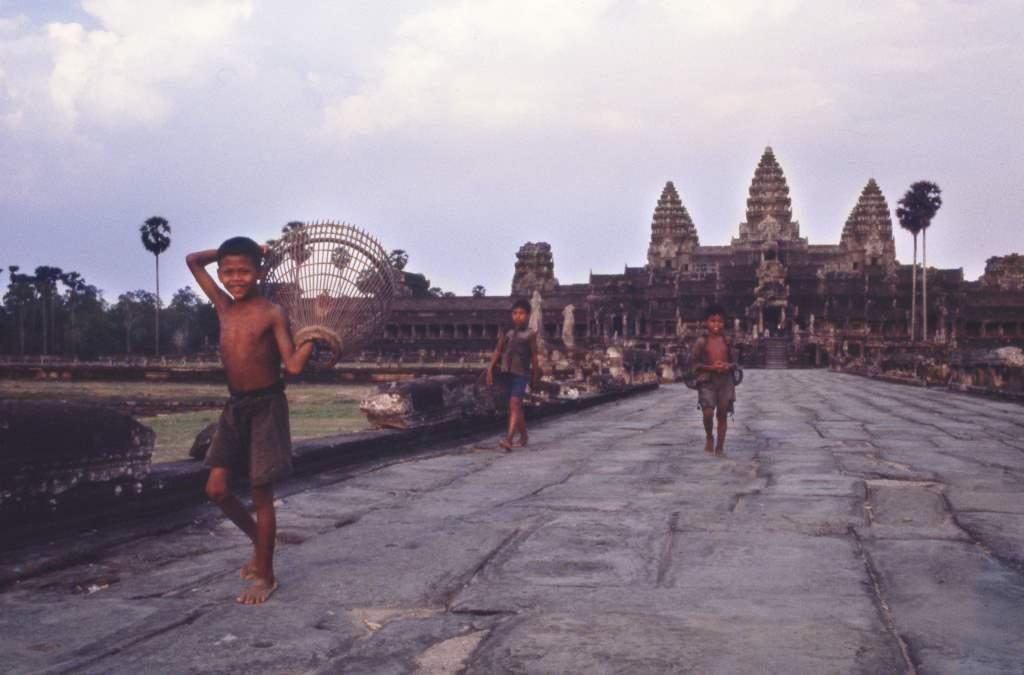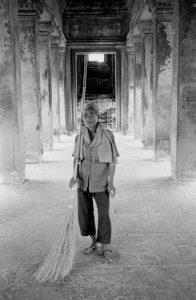Photography exhibitions are plentiful in Cambodia; there are galleries dotted throughout the major cities, and Siem Reap is, of course, host to one of the longest running photography festivals in Asia.
We had the opportunity recently, however, to see a rather more unique exhibition. On display in Siem Reap from early May, organized by our partner, Anjali House, and co-sponsored by the U.S. Embassy of Cambodia, “Cambodia Re-Awakening” is an exhibition of the incredible work of John Burgess, an American author and journalist who arrived in Phnom Penh in 1980.
The Khmer Rouge had been overthrown only one year earlier, and so Burgess tasked himself with documenting the immediate aftermath of the cruel regime as Cambodia and her people looked to put the horrors of the past behind them and work towards recovery. He was one of the first recipients of a “reporting visa” granted by the country’s new government and was able to travel across a variety of provinces from Siem Reap to Phnom Penh.
The teenagers of Anjali House are too young to have witnessed the atrocities of the 1970s, but have studied the photographs from the exhibition and expressed their reactions to what they saw. Some have composed poetry, others have penned stories or personal reflections. Each text has been placed next to the photograph that inspired it (English translations are provided).
Courtesy of our partner, Anjali House, we’re able to share a selection of images from the exhibition with the accompanying text of the teenage students. The exhibition closed yesterday but keep your ears to the ground for future destinations.

“This picture makes me feel so sad. The people in the picture have survived the Khmer Rouge. I think they are sad. They don’t have a good house and money. And now they live in a bad place with their son. I think they are living under a bridge or in an old building where no people live. They don’t have much water, rice or clothes. I think they hope that in the future they can live in a good place and have a big house, and that their son can go to study.” © John Burgess, Text by ChounRotha, aged 16
 “I feel very upset when I see this picture. I think this is after the war, one or two years. How did they escape from the Pol Pot regime? It was a lot of years. The Pol Pot regime started 17 April 1975 to 7 January 1979, so it was three years, eight months and twenty days. It is amazing that they still can live. So, if you were living at that time, can you still have life? Oh! Maybe their parents died during the Pol Pot regime. I think they were in Angkor Wat because behind them is the temple. Angkor Wat looks very nice.” © John Burgess, Text by HannOdam, aged 15
“I feel very upset when I see this picture. I think this is after the war, one or two years. How did they escape from the Pol Pot regime? It was a lot of years. The Pol Pot regime started 17 April 1975 to 7 January 1979, so it was three years, eight months and twenty days. It is amazing that they still can live. So, if you were living at that time, can you still have life? Oh! Maybe their parents died during the Pol Pot regime. I think they were in Angkor Wat because behind them is the temple. Angkor Wat looks very nice.” © John Burgess, Text by HannOdam, aged 15

“War is gone. My life is safe. How could I live? Where could I go? You are only one Khmer Rouge. You kill my heart, my family. Did you hear my heart feel hurt, cry all the time? You are my worst memory. But I never give up. I’m still doing my job until I’m gone.” © John Burgess, Text by Sokly, aged 14

“Cambodia is coming back to life in this picture. I think all the people are feeling happy because they are still alive after Pol Pot. They ride their bikes very happily and the road has good traffic. And some families are living together. When they are living together they are very happy. Some people say that having no food and no drink is not a problem because they’re still alive after Pol Pot. They are very happy.” © John Burgess, Text by Prine, aged 17
About John Burgess:
John Burgess is an American author and journalist with a deep interest in the Angkor civilization of ancient Cambodia. In the late seventies and early eighties, he covered the Cambodian refugee crisis for The Washington Post and Time magazine. Lately, he has written books and novels about the Angkor civilization.
About Anjali House:
Anjali House is an non-profit organization based in Siem Reap supporting around 120 Cambodian children in need. They provide a range of educational and health programs for children, as well as offering avenues for creative expression through arts and photography workshops. It is a locally run organization. Its Director is Khmer, as are all the teachers and the social worker. Reliable and transparent, the NGO has been implementing educational activities for the past 10 years, runs an independent yearly audit of its finances and publishes an annual report on its website. Anjali House aims to see its students develop into healthy, well-adjusted young adults, equipped with the skills and support they need to enter the workforce and be successful in their future endeavours.
At Angkor Travel Photography we are incredibly proud to support this organization, committing to donating $5 from every day you spend with us to our NGO partner. Don’t hesitate to contact them or us for more information about the exhibition or their programs in Cambodia.